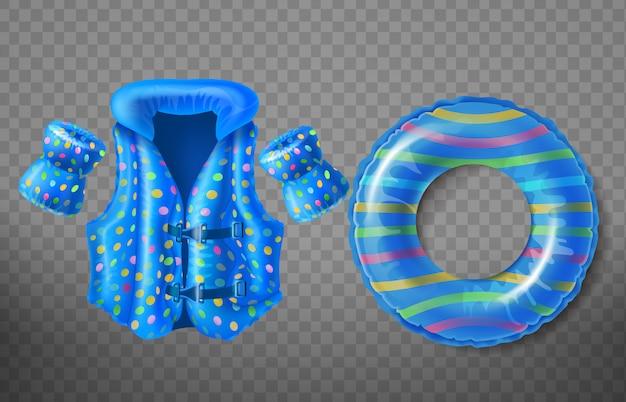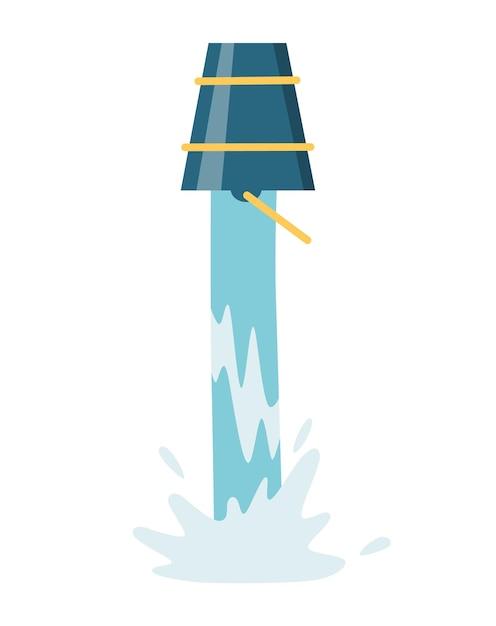Marine buoys play a crucial role in marking navigational channels, indicating hazards and regulations, and guiding sailors and boaters safely through waterways. Among the various types of buoys, one that often catches the eye is the white buoy with a blue band. Have you ever wondered what this distinctive buoy signifies?
In this blog post, we will explore the meaning and significance of a white buoy with a blue band. We’ll also delve into other buoys commonly encountered on the water, such as port hand buoys, mooring buoys, and hazard buoys. Understanding the different colors, markings, and shapes of these buoys can greatly enhance your navigation skills and ensure a safe journey on the water.
So, let’s dive in and unravel the mysteries behind these colorful markers!

What Does a White Buoy with a Blue Band Mean?
Have you ever been out on the water, admiring the scenic coastline, and suddenly come across a buoy with a white body and a bold blue band? Don’t worry, you haven’t stumbled upon an avant-garde art installation or a playful marine creature’s latest fashion statement. In fact, that buoy is there for a very good reason, serving a crucial purpose in the world of navigation. Let’s dive in and explore what this peculiar buoy is all about.
Navigating the Seas: The Purpose of Buoys
Buoys play a vital role in guiding mariners through waterways, ensuring safe navigation and preventing vessels from running aground or colliding with hazards lurking beneath the surface. They act as markers, indicating the presence of channels, shallow water areas, or potential dangers, helping sailors chart their course accurately.
Colors to the Rescue: Understanding the Importance of Buoy Colors
When it comes to buoys, colors aren’t just there for decoration. They convey important information that seafarers need to interpret correctly. Each color combination has a specific meaning, allowing mariners to decipher the message conveyed by a buoy at a glance.
Decoding the White Buoy with a Blue Band
A white buoy with a blue band is known as a “mooring buoy.” Just as its name suggests, it marks locations where vessels can safely anchor or moor. So, if you’re tired of cruising and want to take a break, look out for these trusty buoys—they’ll lead you to a secure spot where you can drop the anchor or tie up your boat without any worries.
Top Tips for Interacting with Mooring Buoys
Here are a few handy tips to keep in mind when approaching and utilizing mooring buoys:
1. Approach with Caution
Just like you would approach any other buoy, exercise caution when nearing a mooring buoy. Reduce your speed and keep a watchful eye on your surroundings.
2. Check for Identification
Mooring buoys often have identification numbers or markings affixed to them. Take note of these identifiers, as they may be required when communicating with harbor authorities or mooring reservation systems.
3. Secure Your Vessel Properly
Once you’ve located a mooring buoy, it’s time to secure your vessel. Make sure you use appropriate lines and knots to ensure a strong and secure connection. You don’t want to float away unexpectedly while you’re enjoying a peaceful moment onshore.
4. Respect the Buoy’s Purpose
Mooring buoys are designed to accommodate one vessel at a time. Be considerate and respectful of this fact, giving ample space to other boaters who may be in need of a mooring spot.
Now that you’ve unlocked the secret behind the white buoys with blue bands, you’ll never be left wondering about their purpose again. So, the next time you set sail and come across one of these nautical beacons, you can impress your crew with your newfound knowledge. And remember, when it comes to mooring buoys, they’re not just floating buoys—they’re your ticket to a peaceful spot on the water where you can anchor and relax. Happy sailing, my nautical friends!

FAQ: What is a white buoy with a blue band mean?
Welcome to our comprehensive FAQ guide on white buoys with blue bands! If you’re a boating enthusiast or simply curious about maritime symbols, you’ve come to the right place. We’ve gathered the most common questions about these buoys and provided clear and concise answers below. Let’s dive right in!
What color is a port hand buoy
A port hand buoy is usually green. In maritime navigation, it’s important to know that when you’re entering a harbor or traveling upstream, you should keep the green port hand buoys on your left side.
What do marine buoys mean
Marine buoys serve as navigational aids to mariners, guiding them through safe waterways and warning them of hazards. They come in various shapes, sizes, and colors, each carrying a specific meaning or message to seafarers.
What does a hazard buoy look like
A hazard buoy is designed to alert boaters of potential dangers such as reefs, rocks, or shallow water. It can be recognized by its distinct pattern of black and yellow vertical stripes, which make it stand out and catch the attention of passing vessels.
What does a mooring buoy look like
A mooring buoy is used to secure boats, providing a stable anchor point in water bodies. These buoys are typically white with a blue horizontal band. They can sometimes have a white light atop to improve visibility at night.
What color are mooring buoys
As mentioned earlier, mooring buoys are primarily white with a blue horizontal band. This color scheme makes them easily distinguishable from other buoys and helps boaters identify suitable locations for safely securing their vessels.
What is a white buoy with a blue band in Florida
In Florida, a white buoy with a blue band indicates that it marks a controlled boating area. These buoys are typically found around swimming areas, designated zones for water sports, and places with speed restrictions. Ensure you pay attention to any additional signage accompanying these buoys for specific regulations.
How do buoys detect hurricanes
Buoys themselves do not detect hurricanes. However, they play a crucial role during hurricane tracking and monitoring. Weather buoys equipped with various instruments collect data such as wind speed, wave height, and atmospheric pressure. This information helps meteorologists analyze and predict the formation and trajectory of hurricanes.
What do buoy markers mean
Buoy markers are navigational aids that convey important information to mariners. They can indicate directions, hazards, safe channels, speed limits, and other relevant information needed to safely navigate through waterways. Understanding and abiding by these markers is essential for boaters to avoid potential dangers and ensure a smooth journey.
Why do boats pass port to port
Boats pass port to port to maintain a standard convention while navigating waterways. This system allows for consistent and predictable movements, reducing the risk of collisions. Keeping port (left) and starboard (right) sides of boats in relation to one another helps establish a shared understanding of navigation intentions among boaters.
What is an anchorage buoy
An anchorage buoy serves as a reference point for vessels to anchor safely, ensuring they remain in designated areas and avoid blocking shipping channels. These buoys are usually white with a single horizontal blue band and may be equipped with lights for improved visibility.
What does a banded buoy mean
A banded buoy refers to a buoy with horizontal bands of different colors. Depending on the combination of colors, these buoys convey specific messages or warnings, such as marking shipping lanes, indicating restricted zones, or identifying areas where certain activities are permitted or prohibited.
What do the colors of buoys mean
The colors of buoys serve as visual cues to communicate important information to mariners. In general, red buoys indicate port (left) side or starboard (right) side of a channel when going upstream, while green buoys indicate the opposite side. Yellow buoys often mark areas of caution or potential hazards, while white buoys are used for various purposes, such as marking controlled zones or anchorage spots.
What do buoys in lakes mean
Buoys in lakes function similarly to those used in maritime navigation. They mark channels, swimming areas, hazards, mooring spots, and other relevant information to ensure safe boating practices. Understanding and following these markers is vital to enjoy a smooth and accident-free experience on the lake.
What side do you pass a green buoy on
When passing a green buoy, keep it on your starboard (right) side. This convention ensures a consistent flow of traffic and helps avoid confusion or potential collisions among boaters. Remember, “red, right, returning” is a helpful mnemonic to remember which side to pass the buoys when returning from sea.
How many types of buoys are there
There are several types of buoys, each serving different purposes. Some common types include navigation buoys, mooring buoys, hazard buoys, anchorage buoys, and special-purpose buoys. Each type has its specific shape, color, and markings to convey a unique message to mariners.
When approaching a mooring buoy, which of the following should you do
When approaching a mooring buoy, it is crucial to reduce your speed, approach it cautiously, and prepare to secure your vessel. Be mindful of any additional regulations or instructions associated with the particular mooring buoy you are approaching.
Which type of buoy is white with a blue horizontal band and may show a white light
A buoy that is white with a blue horizontal band and may show a white light is a mooring buoy. These buoys provide a safe and convenient option for boaters to temporarily secure their vessels without the need for traditional anchor systems.
What is a hazard marker for water
A hazard marker for water is a buoy designed to warn boaters of potential dangers such as submerged rocks, reefs, or shallow areas. These buoys often feature black and yellow vertical stripes and are strategically placed to draw attention and help mariners avoid accidents.
What color are isolated danger buoys
Isolated danger buoys are usually black with red vertical stripes. They are used to mark isolated hazards that may not be immediately visible, making them highly important for safe navigation. Keep a sharp eye out for these buoys to avoid any potential dangers in the water.
What does a white buoy mean
White buoys serve various purposes and can carry different meanings depending on their markings and additional signage. They can indicate controlled zones, mooring spots, swimming areas, or provide specific directions and information to boaters. Pay attention to accompanying signs or instructions to fully understand the purpose of a white buoy.
What does a white buoy with a blue band stand for
A white buoy with a blue band typically indicates a designated mooring area. Boaters can use these buoys to temporarily secure their vessels in a specified region. As always, it’s important to observe any additional instructions or regulations associated with these buoys to ensure a safe and enjoyable boating experience.
That concludes our extensive FAQ guide on white buoys with blue bands. We hope this information has enhanced your understanding of these important navigational aids. Remember, safe boating is happy boating!